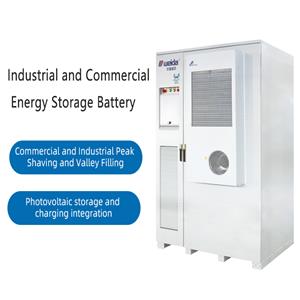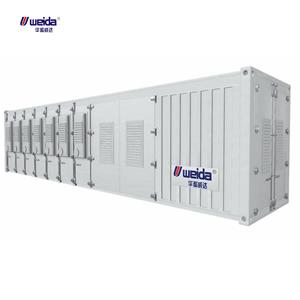Lead-to-Lithium Energy Storage: Embarking on a New “Lithium” Chapter in Energy Upgrades
In the wave of energy transformation, energy storage technology is undergoing a “lead” to ‘lithium’ revolution. Lead-to-lithium energy storage, a term that sounds a bit like a “chemical experiment,” is quietly changing the way we use energy. Today, let's delve into the world of lead-to-lithium energy storage and see how it has become a new “lithium” milestone in energy upgrading.
I. Lead-to-Lithium Energy Storage: Why the “Switch”?
Imagine you have an old bicycle that, while functional, is heavy and slow. Now, someone tells you there's a new “lithium” battery that can make the bicycle lighter and extend its range—wouldn't you be tempted? Lead-to-lithium energy storage is such an “upgrade package.”
Traditional lead-acid batteries, like that old-fashioned bicycle, are technically mature and cost-effective, but they have drawbacks such as low energy density, short cycle life, and large size. Lithium batteries, especially lithium iron phosphate batteries, offer high energy density, long cycle life, compact size, and lightweight design—like equipping the bicycle with a lightweight electric motor, significantly enhancing the performance of the energy storage system.

II. The “Superpowers” of Lead-to-Lithium Energy Storage
Extended Lifespan: Cost-Effective and Reliable
Lead-to-lithium energy storage systems act as a “long-lived” energy guardian. Compared to the approximately 300 cycle lifespans of lead-acid batteries, lithium batteries can achieve over 1,000 cycles. This means that using lead-to-lithium energy storage systems reduces the need for battery replacements, saving costs and minimizing maintenance hassles.
High Energy Density: Small Size, Big Energy
Lead-to-lithium energy storage systems are like energy “compression packages.” Under the same volume, the energy density of lithium batteries is several times that of lead-acid batteries. This means they can store more electrical energy in a smaller space, making them ideal for scenarios with limited space, such as home energy storage or small data centers.

Fast charging and discharging: Energy “flash charger”
Imagine if your phone could charge in just a few minutes—wouldn't that be great? Lead-to-lithium energy storage systems have this “flash charging” capability. They can charge and discharge quickly, like installing an “energy accelerator” for your devices, allowing the energy storage system to charge fully in a short time and release energy rapidly.
III. The “Stage” for Lead-to-Lithium Energy Storage: Application Scenarios Revealed
Home Energy Storage: The “Energy Manager”
In homes, lead-to-lithium energy storage systems can store electricity generated by solar panels and provide power to households during nighttime or cloudy days. It acts like a thoughtful “energy manager,” ensuring your home has a stable power supply at all times.
Industrial Energy Storage: The “Stabilizer” of the Power Grid
In industrial applications, lead-acid-to-lithium energy storage systems can be used for peak shaving and backup power supply. They can rapidly release energy to meet peak demand on the power grid and provide emergency backup power during grid failures, ensuring uninterrupted production.

Communication Base Stations: The “Guardian” of Signals
Communication base stations require a stable power supply to ensure normal signal transmission. Lead-acid-to-lithium energy storage systems are compact, lightweight, and have a long service life, making them better suited to the needs of communication base stations. They reduce the frequency of battery replacements and lower maintenance costs.
IV. The Future of Lead-to-Lithium Energy Storage: A Bright Future
As technology continues to advance, the cost of lead-to-lithium energy storage systems is gradually decreasing. This means that in the future, more businesses and households will be able to adopt this efficient and environmentally friendly energy storage technology. Additionally, with the development of smart grids, lead-to-lithium energy storage systems will integrate deeply with them, achieving optimized energy allocation and efficient utilization.
V. Conclusion: Lead-to-Lithium Energy Storage, Embarking on a New “Lithium” Journey in Energy
Lead-to-lithium energy storage is not merely a technological upgrade but an investment in the future. It opens up new possibilities for energy use and makes our lives greener and more environmentally friendly. If you are still troubled by the various issues of traditional lead-acid batteries, why not consider lead-to-lithium energy storage and embark on your new “lithium” journey in energy?




